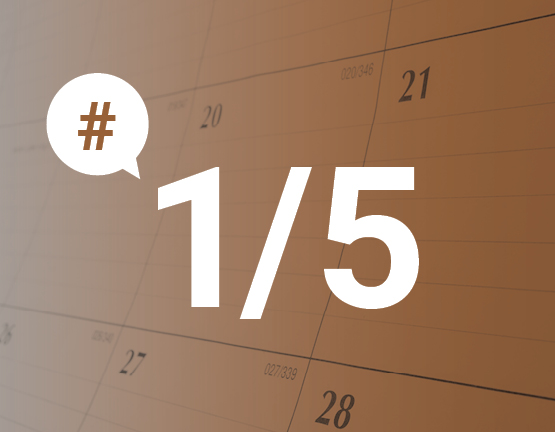1. Advice, more important than ever
Whether you work for yourself or for someone else, it is possible that your financial and tax situation is currently very different from what it was at this time in years past. From a tax perspective, in particular, a number of questions may have to be cleared up: can this expense be deducted, does that grant have to be repaid, and if so, when? Could late income tax instalment payments result in penalties? If you have already repaid certain overpayments, how should these be treated for tax purposes? Many decisions may arise from such questions, and it might be useful to discuss them with your tax specialist, accountant, mutual fund representative or financial services professional, as the case may be – especially since the federal government periodically announces new provisions.
2. Taxable grants
From the outset, however, it has been clear that individuals as well as companies will have to pay tax on the various grants paid out this year. If you run one of the 356,000 or so companies that received the Canada Emergency Wage Subsidy (CEWS), this means that the amount you received must be added to your net income: it will increase the tax payable or reduce the loss that you could claim. As well, if you applied to the Canada Emergency Business Account (CEBA) for an interest-free loan with a forgivable portion, it is important to plan to have it repaid by December 31, 2022 – otherwise, interest will be applied.
3. A shock for some individuals?
If you are one of the 8.9 million individuals who collected the Canada Emergency Response Benefit (CERB), you could have received up to $14,000 with no tax withheld: this taxable amount will be applied to your next income tax return. However, if you had payroll deductions during the two-and-a-half months prior to the pandemic, and if these deductions were based on a higher “normal” income, they could reduce the amount due. How much tax would you have to pay in total? That’s hard to say without doing the actual calculations. Note that the tax treatment may differ for the many government grants offered.
4. Time to use capital losses?
One of the most common year-end tax strategies is to realize capital losses by selling certain investments. These losses can be applied against capital gains to reduce the total tax bill. If you are expecting a higher tax assessment than in the past and have realized capital gains, you may want to discuss this strategy with your advisor. Be aware, however, of the so-called “superficial loss” rules that prevent you from selling and then immediately re-acquiring the same investment for the sole purpose of realizing a loss. Finally, note that this strategy can only be considered with a taxable account, which excludes RRSPs, RRIFs, RESPs and TFSAs.
5. Financial markets: the year ends on December 29
Incidentally, note that in Canada you have until December 29 to make securities transactions for 2020. After that date, transactions will be attributed to 2021 because the settlement period for Canadian financial markets is two business days.
6. Working from home: what are the tax implications?
During this time when many companies have opted to embrace telecommuting, there are a lot of questions about the tax treatment of costs assumed by the employer and the employee. At the time of this writing, it seems that the Canada Revenue Agency would consider a reimbursement of costs by an employer – for example, to purchase a chair, table or computer – to be tax free up to $500. On the other hand, if you have incurred expenses to work from home, you should be able to deduct some of these. In her economic statement on November 30, Finance Minister Chrystia Freeland suggested that Canadians working from home would be able to deduct up to $400 without having to submit a statement of expenses or a form signed by their employer. Note, however, that in the majority of cases, employers would be required to produce specific tax statements confirming the employment conditions of their personnel.
7. Less RRSP room next year?
One unanticipated consequence of the drop in income for many individuals could be the decrease in their RRSP contribution room for 2021. If you have set up automatic monthly contributions, you might want to adjust these to avoid an over-contribution and the risk of penalties. If necessary, you might also want to review your retirement planning to ensure that your strategy is still appropriate for your situation.
8. RRSP: a new limit of $27,830
In this regard, note that an individual’s RRSP contribution room is set at 18% of the previous year’s earned income, up to a certain limit. In 2020, this limit is $27,230; it will go up to $27,830 in 2021. Remember that a contribution made in the first 60 days of 2021 can be applied to either 2020 or 2021. If you expect that your income will differ significantly for these two years, to the extent of putting you in two different tax brackets, you could base your decision on the deduction amount your contribution could provide in either year.
9. Salary, dividends, business expenses and passive income
Pandemic or not, some decisions generally have to be considered at year-end. If you own a small business, one of these is the form in which your company is going to pay your personal income: salary or dividends. Here, it could be important to consider the rules for passive income, i.e., the income that your company receives from its investments. As the following graph illustrates, any passive income above $50,000 reduces the amount of your profit that is eligible for the small business deduction – in other words, the small business tax rate. This situation could lead you to consider certain decisions with respect to your investments, dividends, salaries and other business expenses.
10. TFSA: no change
The annual TFSA contribution limit will stay at $6,000 in 2021. Any individual who was at least 18 when the plan was created in 2009 now has a cumulative contribution limit of $69,500. For everyone else, the limit depends on the year they turned 18. Remember that all gains and income earned within a TFSA remain tax free, even when withdrawn. However, there are certain rules that apply to this type of account. So if you are planning to make a withdrawal, it might be a good idea to do so before December 31. That way, you will trigger equivalent contribution room as of 2021. If you were to wait until January, you would only recover this contribution room in 2022. If you ignore this rule, you could find yourself with an over-contribution and risk a monthly penalty of 1%.
11. Age 71, time to switch to a RRIF or annuity
If you turned 71 in 2020, you have until December 31 to make one last RRSP contribution; as well, you must close your RRSP account before the end of the year. At that point you will have two options: either withdraw everything from your RRSP (careful: the entire amount would then be taxable), or transfer the funds into a disbursement vehicle, such as a registered retirement income fund (RRIF) or an annuity.
12. RRIF: special measure for 2020
Still on the topic of RRIFs, note that the minimum withdrawal to be made each year has been reduced by 25% on a one-time basis for 2020 in response to the financial impact of the pandemic. Thus, if you have not yet completed your withdrawals, you could withdraw less money, thereby lowering your tax bill. Unfortunately, according to the most recent information, if you have already withdrawn the total prescribed amount, it would seem that you cannot retroactively adjust your withdrawals by repaying your RRIF.
13. HBP: now or in 2021?
The Home Buyer’s Plan, or HBP, allows individuals to withdraw up to $35,000 from their RRSP, tax free, to help finance the purchase of a first home. The amount must then be repaid into the RRSP within 15 years. Note that those using the HBP have until October 1 of the year following the withdrawal to buy or build their home. If your plans are not completely firmed up, you might want to use the HBP in early 2021 rather than right now, which would give you an extra year to get things finalized.
14. Planned giving
A donation made in 2020 to an eligible charitable organization will give rise to a tax credit on your next income tax return. If you have significant amounts, however, you might wish to establish a formal planned giving strategy. In particular, this strategy could make use of in-kind donations of eligible securities, where the capital gain would then be tax-exempt. Professional advice would obviously be required to set up this kind of strategy.
15. RESP: still relevant
This year that has made access to classrooms so complicated has reminded us of the large part education plays in our lives. In this regard, don’t forget that contributions to a registered education savings plan (RESP) can provide eligibility for the Canada Education Savings Grant (CESG), which has two components: the basic CESG worth 20% of annual contributions regardless of family income, and the additional CESG, which can add 10% to 20% based on family income. In Quebec, the Quebec Education Savings Incentive amounts to 10% of contributions, up to a plan lifetime maximum of $3,600. In B.C., the British Columbia Training and Education Savings Grant offers additional aid of up to $1,200. Note that low-income families are also eligible for the Canada Learning Bond, which can reach $2,000.
16. Year-end distributions
If you invest in mutual funds*, keep in mind that many of these distribute earnings to their unitholders at the end of the year. If your investment is held outside of a registered plan, you could be receiving an investment income statement to include on your next tax return, even if you haven’t disposed of your units.
OTHER CONSIDERATIONS
In closing, two final remarks for entrepreneurs who are planning their next year.
17. First, be aware that you might have to contend with higher payroll taxes, since Canada Pension Plan (CPP) and Quebec Pension Plan (QPP) premiums are scheduled to rise over the next seven years. For 2021, the increase could be 3.8% for the CPP and 3.5% for the QPP.
18. Lastly, after a year that has severely tested everyone’s spirits, an unfamiliar matter might be on the horizon for employers: the management and costs of employee mental health issues (absenteeism, lower productivity, medical services, etc.). According to a recent survey by the Canadian Federation of Independent Business, most companies do not feel well prepared to address this new risk.
Clearly, the year just ending and the one about to begin are like nothing else in our experience. For a more detailed look at the decisions they might require, contact your mutual fund representative, your financial services professional, your accountant or your tax advisor.
The following sources were used to prepare this article:
Actualis, “What is passive income?”; “A back-to-school financial tool: the RESP.”
CQFF, “La planification fiscale de fin d’année.”
Finance et investissement, “Fiscalité 2020 : encore beaucoup d’inconnus”; “Les prestations remboursées n’affecteront pas vos impôts”; “Stratégies financières et fiscales en temps de pandémie”; “Certains paramètres retraite 2021 sont maintenant disponibles”; “Davantage de taxes pour les PME en 2021.”
CFIB, “January 1 CPP hikes to hit employers’ payroll budgets, cut take-home wages for workers”; “COVID-19: State of Small Business.”
Financial Post, “Ottawa raised the Home Buyers' Plan limit to $35,000 — here's how to take advantage of it.”
Government of Canada, “Government of Canada Releases Supporting Canadians and Fighting COVID-19: Fall Economic Statement 2020» ; « Claims to date - Canada emergency wage subsidy (CEWS)”; “Canada Emergency Response Benefit statistics”; “RRSP options when you turn 71.”
Investment Executive, “Understanding new Covid benefits can be a taxing process”; “Which home-office expenses can be reimbursed tax-free?”; “2021 TFSA limit announced”; “Income and gains on TFSA overcontributions can remain in account, CRA says.”
La Presse, “Sommet historique et plan de relance sur trois ans”; “Philanthropie : quand donner ses actions profite à tout le monde.”
Radio-Canada, “Télétravailleurs » salariés, commencez à penser à vos impôts”; “Les dépenses gonflent le déficit fédéral à au moins 382 milliards.”
TaxTips, “Trade Date vs Settlement Date, Last Trading Date for 2020.”
The Globe and Mail, “Why it’s an ideal time to be making RRIF withdrawals.”
TMX, “Settlement Schedule for 2021.”




